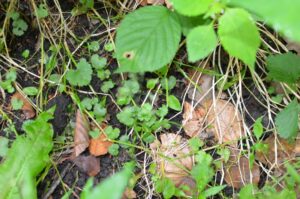In a Typical L Mull, litter decomposition is slower than at A Mull sites. The litter is decomposed and incorporated into the mineral soil within <2 years. Due to high soil biological activity, the Ax horizon or Au horizon is usually rich in organic matter and has a predominantly granular or subangular blocky or angular blocky structure. In loamy sand and sandy loam soils, Ah horizons with a less pronounced granular structure and subangular blocky structure can also occur. The A horizon shows clear signs of high biological activity such as earthworm casts and channels showing recent earthworm activity. The A horizon also shows worm casts at the soil surface, occurrence and activity of macro- and mesofauna and their faecal pellets (especially springtails, mites and small annelids, isopods, and millipedes). The distinct features of a Typical L Mull are:
- Ol horizon is present almost all year round, and
- Olf horizon is patchy, sparse, and only temporarily present.

